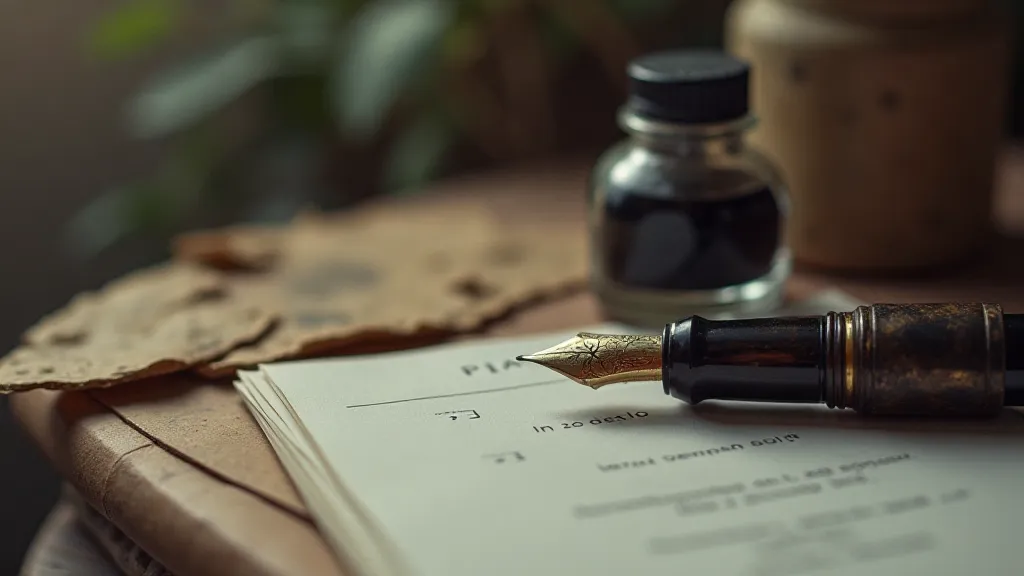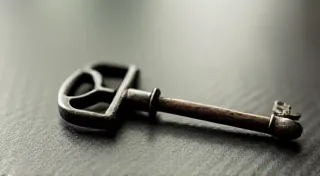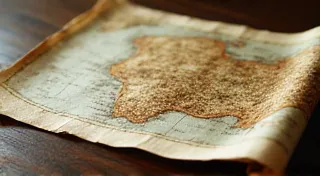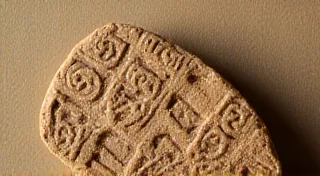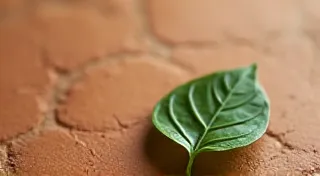Resonance and Flow: The Connection Between Nib Grind and Rhythm in Prose
There’s a certain melancholic beauty to collecting vintage fountain pen nibs. It's more than just accumulating objects; it’s holding history in your fingertips, feeling the echoes of countless words poured from their finely crafted tips. We often focus on the pens themselves – the celluloid, the gold, the intricate designs. But the true heart of a fountain pen lies in its nib, and especially a vintage nib, with its imperfections and quirks, whispering secrets of a bygone era. It’s a connection that goes beyond mere writing; it’s about resonance – a palpable flow between the writer and the instrument.
My fascination began, unexpectedly, with antique accordions. The bellows, the keys, the aged wood – each element held a story of joyous gatherings and solitary reflections. I realized that an accordion, like a pen, wasn't just about producing sound or writing words; it was about *how* it was produced. The subtle variations in tone, the unique character of each key or note, shaped the music’s emotion. This realization sparked a new curiosity: could the same principle apply to the seemingly more modest world of fountain pen nibs?
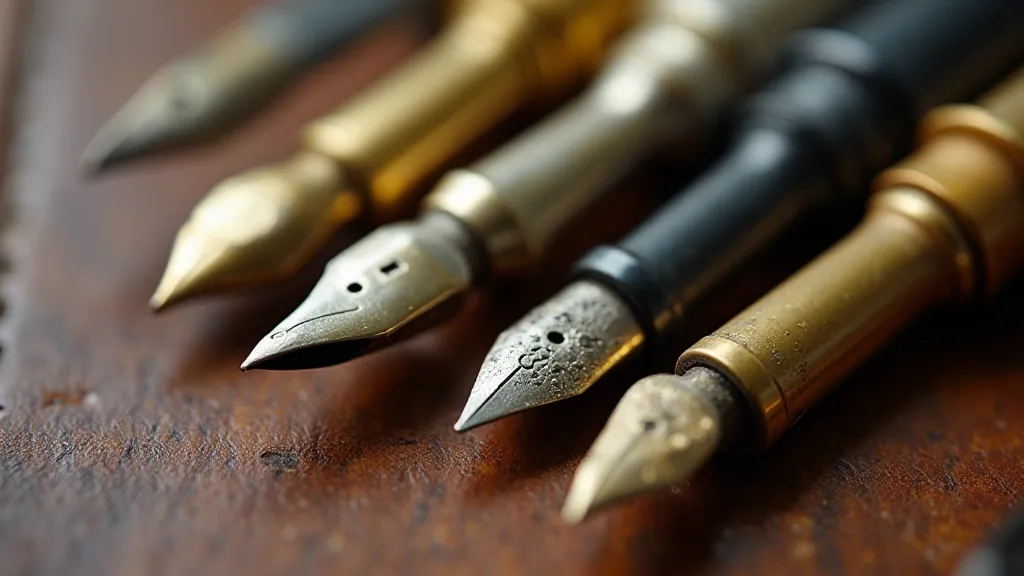
The Evolution of a Grind: A Historical Perspective
The history of fountain pen nibs is a fascinating study in craftsmanship and evolving aesthetics. Early mass-produced nibs, while functional, lacked the individuality we associate with vintage examples. The late 19th and early 20th centuries witnessed a golden age of nib making. Companies like Waterman, Parker, and Wahl-Eversharp employed skilled artisans who honed their craft over years. Each nib was, to some extent, a bespoke creation, influenced by prevailing writing styles and the demands of a growing literate population. Examining the trajectory of these tools truly feels like tracing the evolution of nib design—a complex interplay of artistry and practicality.
The rise of the typewriter certainly impacted nib design. As typewriters became more commonplace, the need for flamboyant, expressive nibs – the “flex” nibs that could stretch and bounce, creating incredibly varied line widths – diminished. More consistent, less characterful nibs became the norm, prioritizing uniformity over individuality. However, those early flex nibs, with their inherent unpredictability, represent a unique chapter in writing history. The shift towards standardized nibs marked a significant change in how writing was perceived and executed, and demonstrates the interconnectedness of technology and artistry.
The Language of the Nib: Defining Grinds
Understanding the different nib grinds is crucial to appreciating their impact on prose. A “stub” nib, with its broad, flat sides and a pointed tip, lends a stately, deliberate feel to writing. The thick lines emphasize the beginning and end of each stroke, giving prose a sense of weight and gravitas. Imagine a historian meticulously chronicling events, or a poet crafting formal verse – the stub nib suits such endeavors perfectly. The weight and presence of a stub nib are undeniable—a deliberate assertion of character on the page.
An “italic” nib, even more dramatic than a stub, features sharply defined line variations. It demands precision and control, but rewards the writer with a distinctive, calligraphic flair. Writing with an italic nib feels like sculpting words onto the page; each stroke is a deliberate act of creation. The resulting prose can be powerful, even theatrical. The sheer elegance of an italic nib invites a more considered approach to phrasing, elevating the entire writing experience.
“Oblique” nibs, less common today, were specifically designed for writers who held their pens at an unusual angle. They offer a unique combination of flexibility and a distinctive “bounce” to the line. They are a testament to the personalized nature of writing in a time when penmanship was a prized skill. The legacy of oblique nibs reminds us that the "right" way to write wasn's always a matter of standardization.
Feeling the Flow: How Nib Grind Affects Rhythm
The most profound connection between a nib grind and a writer’s rhythm isn’t merely aesthetic. It’s a physical sensation, a subtle feedback loop that shapes thought and expression. A broad stub nib, for example, requires a slower, more considered pace. The resistance of the tines against the paper encourages a thoughtful approach to sentence construction. The writer isn't just producing words; they’re *feeling* the weight of each stroke. This deliberate pace often translates into a more measured and impactful prose, suited for conveying profound meaning or detailed observation.
Conversely, a flexible nib encourages a more fluid, almost improvisational writing style. The responsiveness of the tines – their ability to expand and contract with changes in pressure – creates a sense of elasticity in the prose. Sentences flow organically, with a natural ebb and flow. It’s as if the nib itself is guiding the writer’s hand, suggesting new directions and possibilities. The experience can be deeply satisfying, fostering a connection between the writer and the instrument that feels almost intuitive.
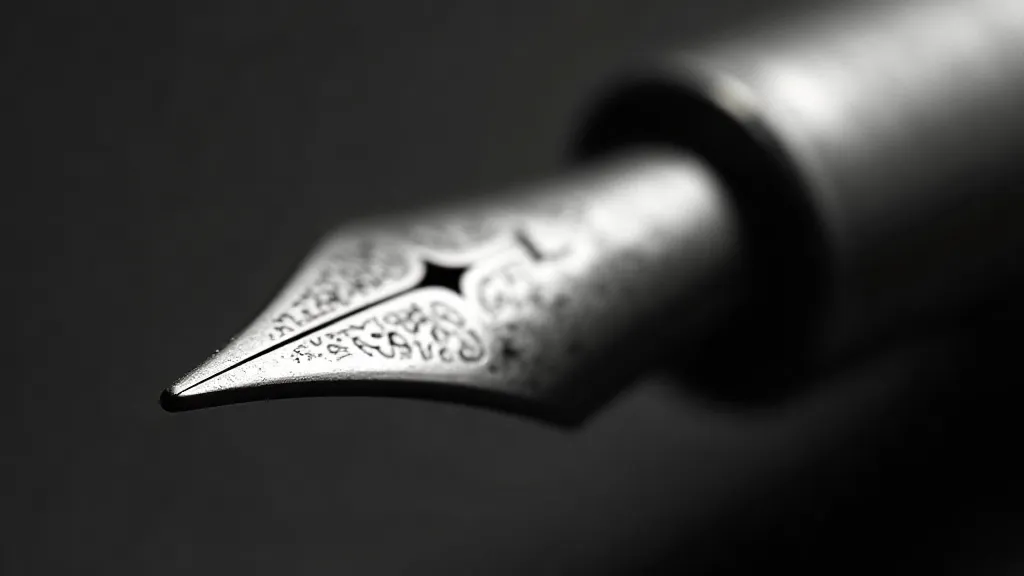
Restoration and Preservation: Respecting the Past
Many vintage nibs bear the marks of time – scratches, misaligned tines, and dried ink. While some collectors prefer to preserve these imperfections as part of the nib’s history, others choose to restore them to a more functional state. Restoration requires a delicate touch and a deep understanding of nib anatomy. Simple adjustments to the tine alignment can dramatically improve the writing experience, while more complex repairs may require specialized tools and expertise. The stories embedded within those marks of time—a reminder of countless words written and experiences shared.
The ethical considerations of nib restoration are significant. Is it right to alter a piece of history, even if it improves its usability? There’s no easy answer. Some argue that restoration is a form of preservation, allowing future generations to experience the joy of writing with these remarkable instruments. Others believe that authenticity should be paramount, and that any modification diminishes the nib’s intrinsic value. The debate over restoration mirrors a broader discussion about our relationship to the past—how we honor it, and what our responsibilities are as stewards of its legacy.
Beyond the Object: A Connection to the Past
Collecting vintage fountain pen nibs is about more than just acquiring objects. It’s about connecting with the past, honoring the craftsmanship of those who came before us, and rediscovering the simple pleasure of putting pen to paper. Each nib tells a story, and by holding it in our hands, we become part of that story. It’s a reminder that writing isn't just a process; it’s a conversation across time, a subtle resonance between the writer and the instrument. The echoes of past writers resonate through these tools, connecting us to a rich tradition of artistic expression.
The imperfections, the quirks, the very wear and tear on a vintage nib – these are not flaws; they are testaments to a life lived, words written, and stories told. They are a tangible link to a time when writing was an art, and the tools of that art were crafted with care and passion. And, perhaps most importantly, they inspire a deeper appreciation for the rhythm and flow of prose itself. The very act of holding a vintage nib—a conduit to another era, and another perspective. It’s a journey through time, revealing the enduring power of the written word. It’s as though the nib itself whispers tales of bygone days, adding a layer of depth and meaning to the writing experience. Often, examining these relics leads one to consider the stories etched into antique nibs—each one a testament to a life and legacy.
